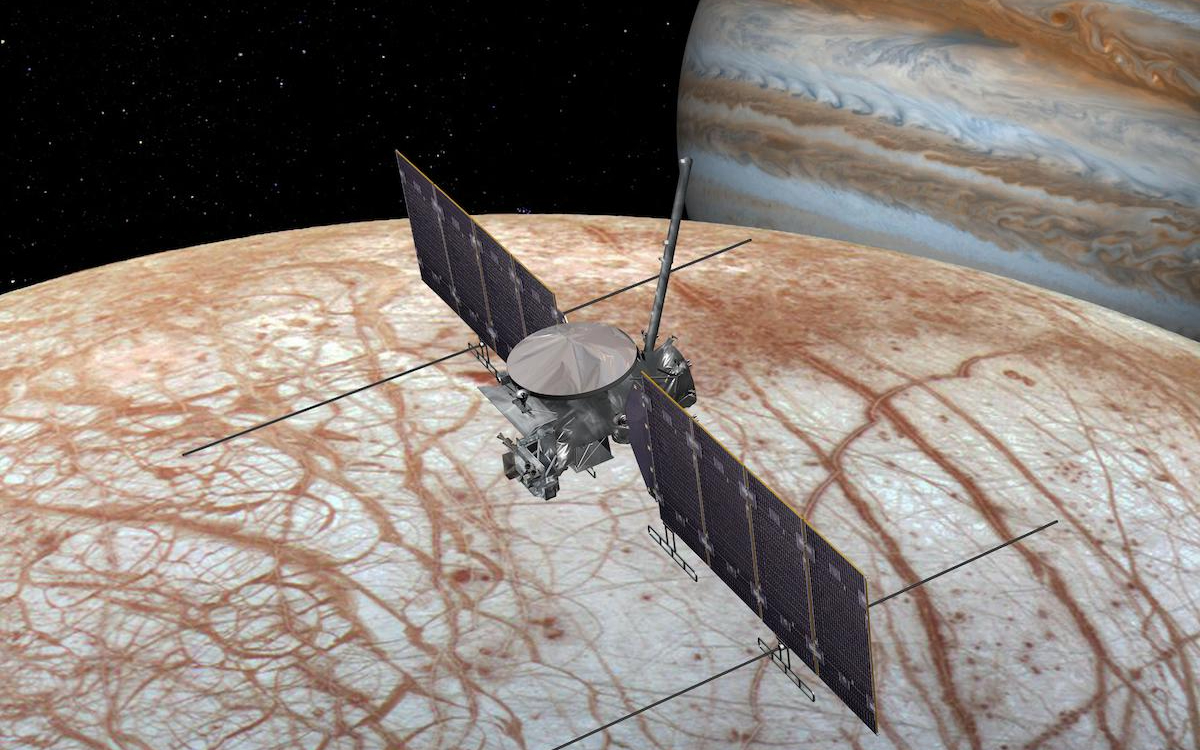
The thickness of ice shells covering our solar system's ocean-bearing moons could provide hints about whether these mysterious bodies may harbor life, a new study suggests.
The study, led by researchers from Cornell University, was inspired by measurements of ice shelves in Antarctica. Performed by underwater robots, these measurements led to an analysis of the connection between variations in ice thickness and the temperature of water beneath the ice. So, the team thought, what if these observations could be applied to the solar system's moons?
If such measurements could be performed from Earth's orbit, maybe they could provide insights into the relationship between the ice crusts of ocean worlds beyond our planet, and the underlying oceans within. That, in turn, may provide some hints about the potential habitability of these worlds.
"If we can measure the thickness variation across these ice shells, then we're able to get temperature constraints on the oceans, which there's really no other way yet to do without drilling into them," Britney Schmidt, associate professor of astronomy and earth and atmospheric sciences at Cornell University and lead author of the study, said in a statement. "This gives us another tool for trying to figure out how these oceans work. And the big question is, are things living there, or could they?"
Related: NASA outlines plan to deploy burrowing 'cryobots' on icy moons of Saturn and Jupiter
Ice-covered moons, such as Saturn's Enceladus or Jupiter's Europa and Ganymede, are believed to harbor enormous oceans under their frozen surfaces. Some of these oceans may have conditions favorable to the emergence of living organisms. These worlds are considered some of the likeliest bodies in the solar system to host some form of life beyond Earth. However, even if it’s there, detecting such life under the moons' icy crusts, which could each be more than 10 miles (16 kilometers) thick, poses a complex technological challenge. How can scientists peer beneath such a strong shell that sits so far away from our planet?
Spacecraft headed to these icy worlds, such as NASA's Europa Clipper scheduled to launch later this year, may be able to use their sophisticated instruments to provide some answers on the topic. But what, in particular, might they want to look for?
The team's Antarctic observations showed that the ice crust above the ocean and the underlying mass of water interact through a process dubbed ice pumping. Differences in ice thickness, the researchers say, mean the liquid water is subject to various amounts of pressure, which affects the water's melting and freezing point. With a thicker layer of ice above, the pressure is higher and the freezing point decreases, which means that submerged ice can sometimes melt. Water released from the ice would be warmer than its surroundings, which means it'd flow upward and refreeze closer to the ice shell's surface. That's ice pumping.

This mechanism, the researchers said, "results in unique ice compositions and textures and influences the distribution of sub-ice habitats on Earth."
And they believe the same ice pumping process could be at play on Europa, Enceladus and Ganymede — perhaps even on Saturn's moon Titan.
"There's a connection between the shape of the ice shell and the temperature in the ocean," Schmidt said. "This is a new way to get more insight from ice shell measurements that we hope to be able to get for Europa and other worlds."
Measurements of the Enceladus ice shell conducted by NASA's Cassini probe, which orbited Saturn and its moons between 2004 and 2017, suggest the moon's subsurface ocean may have a temperature between 30 and 29.7 degrees Fahrenheit (minus 1.095 and minus 1.272 degrees Celsius). Understanding how temperature varies around the moon will help map the ocean's circulation, which could inform about its habitability, the researchers said.
The researchers think Enceladus is likely to feature a weaker ice pumping effect than Europa because the former is relatively smaller.
The study was published in the February issue of the Journal of Geophysical Research.







